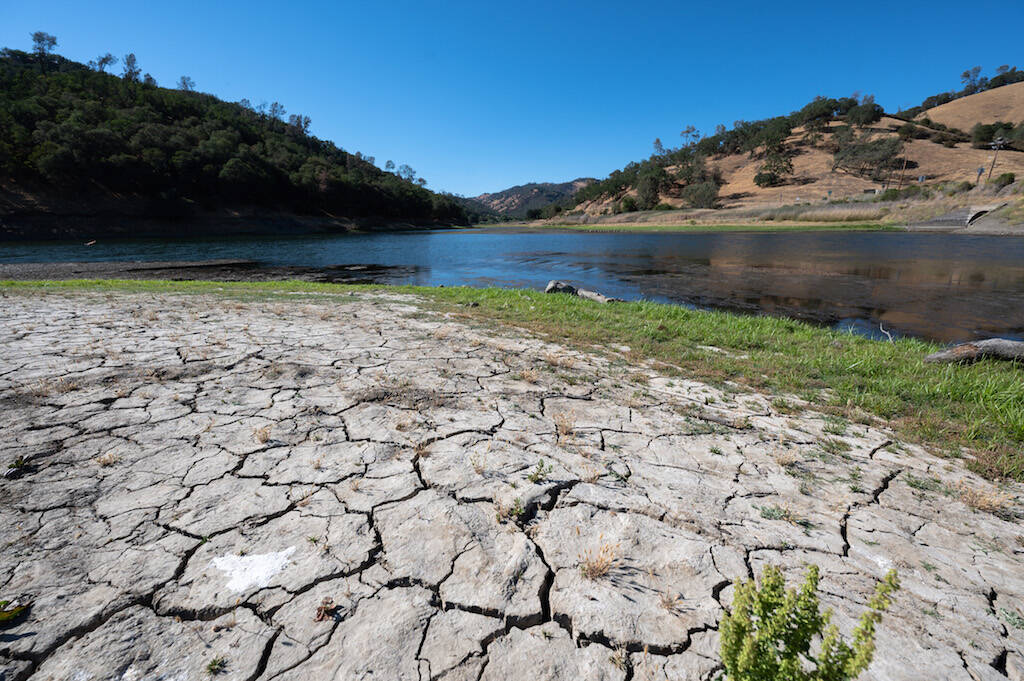Op-Ed: Does the Bay Area Have the Water It Needs to Grow?

Op-Ed: Does the Bay Area Have the Water It Needs to Grow?
With the right efficiency and land use measures, the region can add 2.2 million homes by 2070.
It seems as though the two things the Bay Area has the least of are housing and water. The region has a shortfall of 699,000 housing units, which has driven housing costs to astronomical heights, and pushed 35,000 of our neighbors into temporary housing or onto the streets. Our colleagues at San Francisco Bay Area Planning and Urban Research Association (SPUR),a public policy think tank, have found that the region needs to build an astonishing 2.2 million homes by 2070 to meet future demand and make up for the present shortfall.
Meanwhile, the region is experiencing a record-setting drought, just four years after the last historic drought ended. Gov. Gavin Newsom has urged Californians to reduce water use by 15%. Salmon are on the brink of extinction, and communities upstream from us live beside rivers choked with toxic algae because too much water is diverted for farms and cities. Against this backdrop, you may wonder — does the Bay Area have enough water to continue to grow?

In a new report from SPUR and Pacific Institute, “Water for a Growing Bay Area,” we found that the answer is a resounding yes, if the region adopts comprehensive water efficiency measures and smart land-use planning. To answer this question, we modeled six scenarios for future water demand, varying how the region grows and how efficiently people use water in homes and businesses.
One of the most interesting findings was how much people could save water inside their homes just by installing the best available plumbing appliances. The typical Californian uses about 50 gallons per day inside their homes (including about eight gallons lost to leaks). If that same person upgraded to the best technology commonly available on the market and fixed most of their leaks, they’d use just 27 gallons per day. People could use about half the water they use today indoors, without changing their habits — just by changing their equipment.
There also are big opportunities to use less water outdoors. About a third of water in the Bay Area is used outside. With a combination of adopting water-efficient landscaping in residential yards and pursuing compact growth strategies, the region could reduce its water use by 28% compared to a business-as-usual approach. Building dense infill housing reduces per-person water use for two reasons. People with smaller yards use less water outdoors. And adding a new accessory dwelling unit or an extra story to an apartment building doesn’t increase the total amount of irrigated space in the region, whereas converting open space to a new housing development does.
Green lawns are a popular feature of outdoor spaces in the Bay Area. But large home lawns are a relic of 17th-century English aristocrats, who lived in a country where it rains regularly throughout the year. There are other plants that are attractive and better-adapted to California’s climate. That doesn’t mean there shouldn’t be lawns anywhere. But they should be reserved for spaces where people gather and play on the grass.
Las Vegas has recently taken an important step to promote water-efficient landscapes that can serve as a model for Bay Area communities. Leaders there have told businesses and public agencies that they need to remove all nonfunctional grass — grass that is purely decorative — by 2026. There will still be grass in parks and schoolyards, but no more vast expanses of lawn surrounding a parking lot or office building. Homes that have lawns can keep them, as long as they don’t exceed 5,000 square feet. New homes can have up to 500 square feet or up to 50% of their yard covered in lawn, whichever is greater. These kinds of rules are understandable, enforceable and can yield big water savings.
The commercial sector can also play an important role in reducing water use. The commercial sector (businesses and other non-residential institutions) currently accounts for 37% of all water use in the Bay Area, but there’s comparatively little known about how businesses use water. Business owners have argued that laws requiring them to become more efficient could stifle the economy. It’s hard to counter them, because we don’t have good studies on water use in businesses.
It’s people at home who have done the lion’s share of water conservation in California. When California’s landmark water efficiency law, known as 20×2020, passed in 2009, cities were required to decrease their water use by 20% — but the commercial sector only had to become 10% more efficient. That placed most of the burden to become more efficient on homes.
With overall efficiency gains of 1% to 2% per year, businesses and institutions could reduce their water use by more than 15%, even while adding 2 million additional jobs to the region. In the future, the state should undertake more ambitious studies of commercial water use, and use that information to set efficiency targets for the commercial sector.
Our study shows the Bay Area can add 2.2 million new homes and 2.1 million new jobs by 2070 and use no more water — or even less — than it does today, through the impact of incremental changes in water efficiency and land use made over the span of decades.
This result may seem surprising — but it isn’t. Since the 1980s, the region’s population grew by 30%, yet total water use decreased by 30%. The keys are to continue to make homes, businesses and landscapes more efficient, and pursue compact land-use planning.
Laura Feinstein is sustainability and resilience policy director at SPUR, a Bay Area public policy think tank. She holds a doctorate in Ecology from UC Davis. Follow her on twitter: @DrLFeinstein.
Anne Thebo is a senior researcher for Pacific Institute, a global water think tank. She holds a doctorate in Civil and Environmental Engineering from UC Berkeley.
This op-ed first appeared in the San Francisco Examiner.

